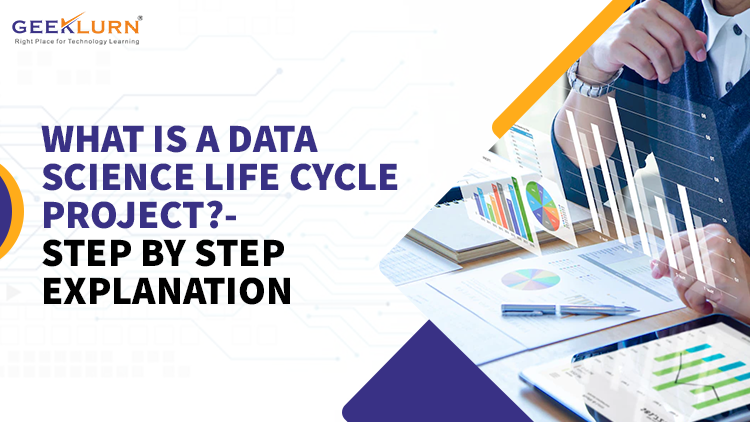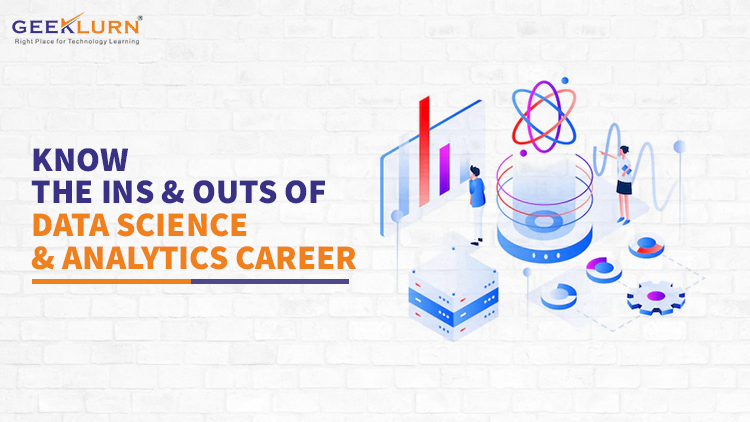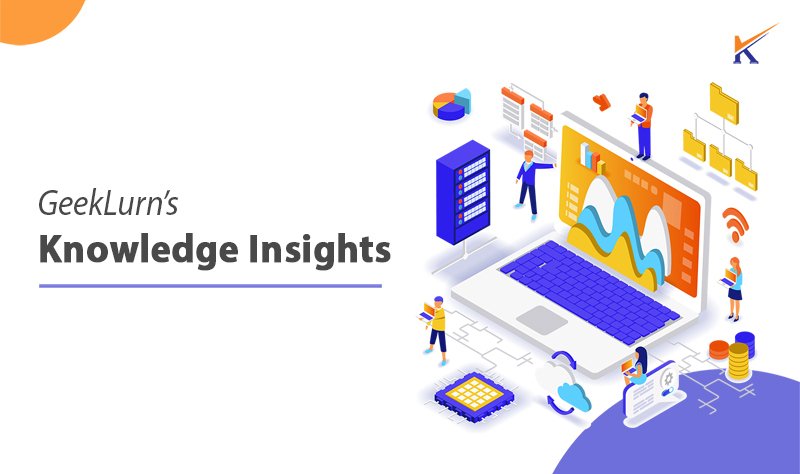Data science is an interdisciplinary field that uses advanced analytics to extract valuable insights from noisy structured and unstructured data. The steps that a data scientist takes to deliver a project are cumulatively known as the data science life cycle. It includes various unique analytical strategies to offer information and make predictions. While some data science assignments focus on data, modeling and assessment, others are more detailed with a thorough understanding of business and deployment. However, the basics remain the same, like cleaning, preparation and evaluation with a generic structure.
GeekLurn’s Data Science Architect Program can provide you tech-enabled job-relevant skills through the development and design of Big Data. It helps you understand how to convert massive quantities of data into real-time applications. With 1-on-1 mentorship to share ideas, address intraquery and learn the technical trends and terms, you will be able to kickstart a successful career in data science. The program offers 320+ hours of live training sessions, 50+ sponsored funded research projects and certifications from top companies. Before you enrol, it is a good idea to know the data science steps.
Table of Contents
An Introduction to the Data Science Life Cycle
There is no standard definition of a data lifecycle. It is usually a thematic abstraction. The manifestation can be changed depending on the dataset or collection of datasets to which it will be applied.
| An Example of a Data Lifecycle | |
| Step 1: Acquire | Create, capture, gather from lab, fieldwork, surveys and devices. |
| Step 2: Clean | Organise, filter and annotate |
| Step 3: Use/Reuse | Analyse, mine, model, derive, decide, drive and act |
| Step 4: Publish | Share, disseminate, collect and create portals |
| Step 5: Preserve/ Destroy | Store, subset compress, index, curate or destroy |
The area of focus can expand beyond the dataset to a bundle of artefacts like code, workflow and computational environment information and knowledge. All these are generally produced in the course of the final results of a project. The globally accepted structure for fixing an analytical problem is called a Cross Industry Standard Process for Data Mining or CRISP-DM framework. Make sure to create a proper structure to avoid a lengthy procedure.
Life Cycle Steps
It is necessary to understand the life cycle of data science in greater depth to deliver the outcomes efficiently with minimal hiccups on the way. Here’s a detailed look.
Step 1: Business Problem Definition
The whole lifecycle will depend on the goal of the enterprise. For instance, a company may wish to know the customer churn rate of their retail business or minimise loss. Work with the project manager to get a definite idea of the problem to be solved, identify the potential risks involved, assess the resources and define the expected value of the forthcoming project. A business analyst will gather the information for precise speculation by a data scientist.
Step 2: Data Understanding and Investigation
You will need a series of all relevant data to solve the underlying problem. Check what information is present, what is required and what needs to be used. Identify different data sources, like social media posts, data from digital libraries, and data accessed through internet sources via APIs, web server logs and web scraping. A few questions to ask beforehand are:
- Is the data readily collectible?
- Is the data available to buy?
- Is the data internally available?
Once you have extracted the necessary data, the next step is to explore it using graphical plots. Other tasks include documenting, cleaning, combining different data sets, visualising and presenting the findings for feedback.
Step 3: Data Preparation
This is one of the most crucial and time-consuming steps of the data science project life cycle. It takes up 90% of the entire time required to finish a task. Here you need to integrate data by merging datasets, choosing the applicable data, cleaning and dealing with missing values by inputting or eliminating and testing for outliers. You may also have to deal with box plots and cope with them. Building a set of clean data can help to identify structure, trends and anomalies and determine the correct algorithms for model creation.
Step 4: Data Modeling
A model will take the data as input and provide the output. This is the core process of a data science life cycle, where the correct model type is selected. This is regardless of the problem type like classification, regression or clustering based. Two phases are involved in evaluating the model: Data Drift Analysis and Model Drift Analysis. Once this step is completed, the data scientist will tune the hyperparameters to draw a favourable outcome. Make sure there is proper stability between the generalisability and the problem.
Step 5: Model Deployment
This is the final step of the life cycle of data science project. Choose the apt solution after a rigorous evaluation and then deploy it in the desired format and channel. Be extra careful, give undivided attention and perform proper testing to ensure the model is accepted for real-world applications.
The Bottom Line
An entire data science life cycle requires time and effort. All the steps are equally necessary for freshers and seasoned data scientists. Try to learn the processes first by applying for a course and then practise with smaller projects. Further, learn Python and R, which are the two most required languages for data science.






